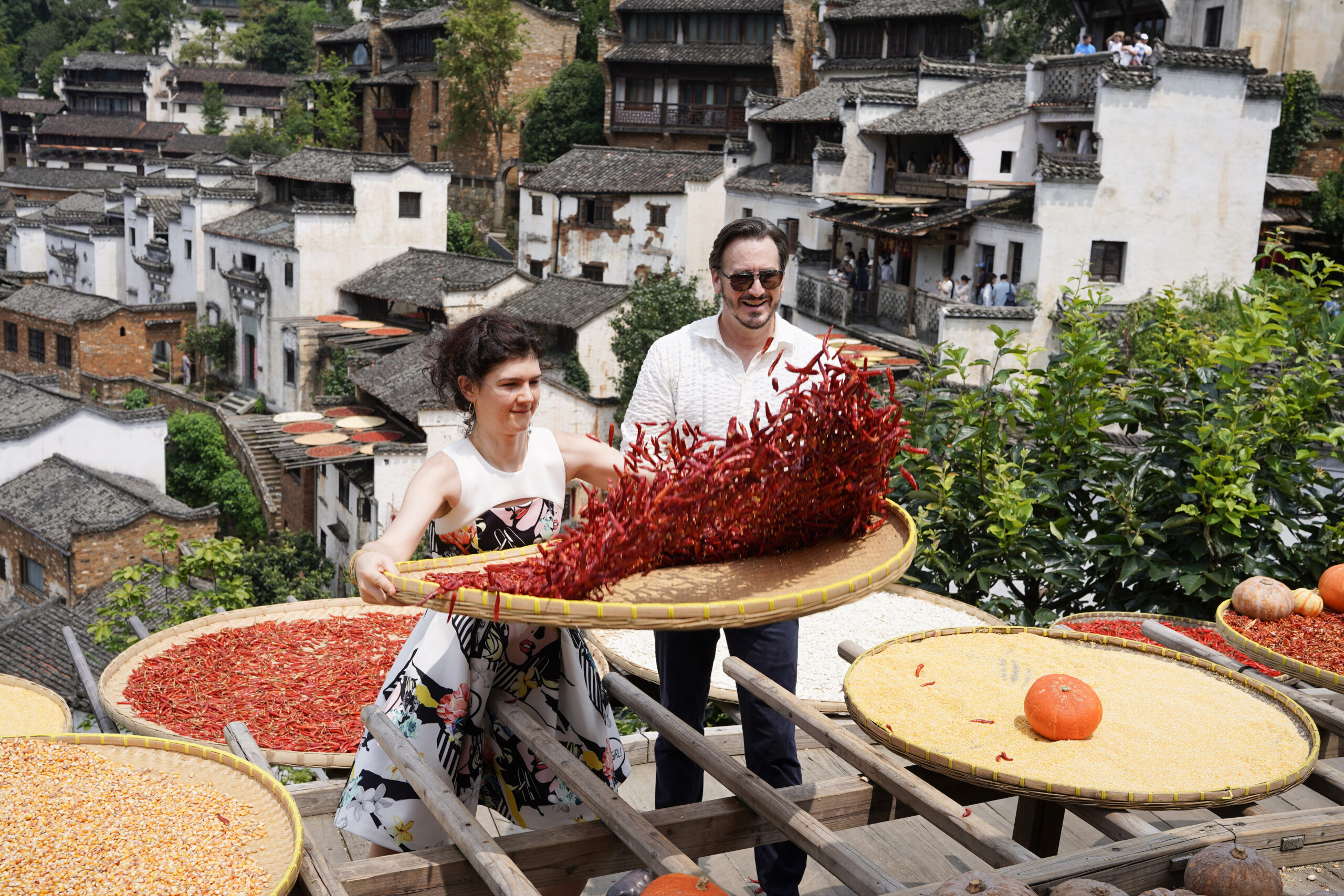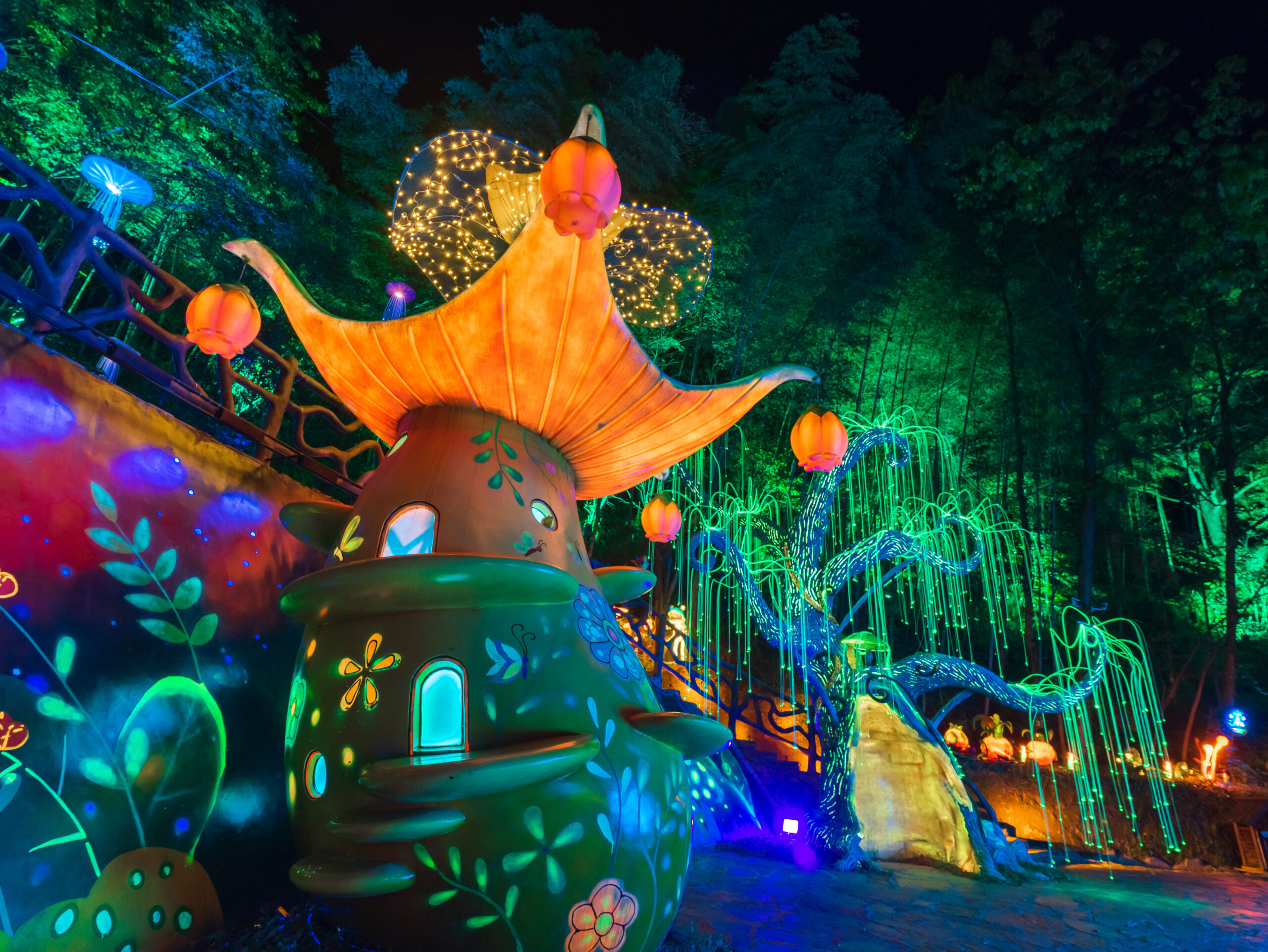Tourism investment transforms villages ecologically
NANCHANG (XINHUA) – While picturing old wooden buildings and remote village life, Mylene Mathieu who hails from France did not expect to be charmed by the sights and sounds of Huangling village, in the Wuyuan County of east China’s Jiangxi province.
Perched on a scenic platform, Mathieu extended her arms grasping a broad bamboo sieve while tossing red chili peppers. Mathieu was trying out a villager’s daily routine, but the highlight was her captivation with the panoramic vistas of traditional grey-and-white Chinese buildings nestled among lush trees.
Tossing is a procedure aimed at properly drying agricultural products, such as chili, corn, and peanuts, for longer preservation. The common rural practice is also part of Mathieu’s myriad countryside experiences on her trip to Huangling Village.
Mathieu, who moved to Beijing earlier this year after more than seven years of studying Chinese, shares her daily life experiences on social media, and has gained tens of thousands of followers in just months. Her trip to Huangling turned out to be a unique experience.
“This is my first time coming to a Chinese village, and I didn’t expect to meet such a beautiful one,” Mathieu said. She posted a video about the chili-tossing on her TikTok-like Douyin account, with a Chinese profile name translated as “French wife xiaobengbeng,” alluding to her status as the spouse of a Chinese man.

Before coming to Huangling, Mathieu did not have high expectations. “I had this image of Chinese rural areas as old and remote,” she said.
However, upon entering Huangling, she was immediately captivated by the village’s blend of ancient charm and modern convenience. Traditional architecture intricately adorned the landscape, and wide, flat stone paths connected every corner of the village.
Mathieu was especially impressed with a local light festival showcasing folk customs.
“I had only seen light festivals in big cities before, but Huangling combines traditional folk parades with lights, preserving tradition while showcasing the charm of modern technology,” she said.
She was also captivated by the village’s operating model. Local villagers found meaningful employment within the scenic area, leading to a shared sense of happiness and prosperity.
“You can feel their happiness radiating from within. Under the village leadership, everyone shares the consensus to pursue happiness together in this picturesque place,” she said.

In just a few years, Huangling transformed from a poverty-stricken village into a rural tourism hotspot. Villagers can rake in tourism-related income from sectors such as accommodation, catering, and transportation.
The average annual income per villager increased from CNY3,500 before tourism development to over CNY50,000 currently, with some families earning over a million yuan annually through their involvement in the tourism industry.
Today, Huangling is gradually gaining global recognition. It had hosted international summits featuring rural tourism and formed alliances with tourist villages from around the world.
Touirsm is one of the most important sectors included in China’s state investment plans.
Just Friday, China’s economic planner released news of conducting 4,894 major projects to actively attract the participation of private capital, in order to further stimulate the vitality of private investment further.
The projects involve a total investment of about CNY5.27 trillion, according to the National Development and Reform Commission (NDRC).
From the perspective of industry, these projects are mainly related to urban construction, agriculture and tourism, the NDRC said.
In terms of regional distribution, there are 2,213, 1,020, 1,497 and 164 projects in China’s eastern, central, western and northeastern regions, respectively, it said.
On an inspection trip from Wednesday to Friday, Chinese President Xi Jinping called on the northeastern province of Heilongjiang to firmly grasp its strategic position in China’s overall development, and strive to open new ground for its high-quality development.
At the Beijicun, or “North Pole Village,” a riverside border village, he stressed the importance of increasing green coverage and protecting forests, calling for measures to enable people to increase their income on the basis of ecological protection.
Noting the importance of tourism sector in achieving high-quality development, Xi urged policy support to ensure that local scenery and snow and ice tourism resources generate more income for local people.


